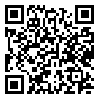Volume 22, Issue 1 (March 2024)
Iranian Rehabilitation Journal 2024, 22(1): 95-106 |
Back to browse issues page
Download citation:
BibTeX | RIS | EndNote | Medlars | ProCite | Reference Manager | RefWorks
Send citation to:



BibTeX | RIS | EndNote | Medlars | ProCite | Reference Manager | RefWorks
Send citation to:
Midha D, Arumugam N. Therapeutic Application of Multichannel Transcranial Direct Stimulation on Cognitive Domains and Motor Functions of Paretic Hand. Iranian Rehabilitation Journal 2024; 22 (1) :95-106
URL: http://irj.uswr.ac.ir/article-1-1845-en.html
URL: http://irj.uswr.ac.ir/article-1-1845-en.html
1- Department of Physiotherapy, Punjabi University, Patiala, India.
Abstract: (2905 Views)
Objectives: This study was done to find the effect of multichannel transcranial direct current stimulation (M-tDCS) on motor and cognitive outcomes in individuals with subacute survivors by modulating the cortex of cognitive and motor functions simultaneously.
Methods: This is a two-group, randomized control trial conducted on 40-75-year-old stroke individuals. A total of 14 participants were recruited from outpatient clinics in Punjab, India. Random allocation of participants was done in both groups with n=7 in each group. The experimental group received M-tDCS. Paretic hand training was done using SaeboFlex and standard physiotherapy rehabilitation. Group B participants received similar treatment except for the sham M-tDCS. The primary outcome measures focused on the assessment of hand function upper extremity function and cognitive domains. Secondary outcome measures focused specifically on the assessment of hand function, including grip strength, pinch strength, and dexterity functions along with the assessment of quality of life assessment and adverse effects associated with the application of transcranial direct current stimulation (tDCS). Statistical analysis was done after four weeks using SPSS software, version 22 by a statistician. One-way ANOVA and independent t-test were used to compute within-group and between-group results at 95% CI and P<0.05.
Results: Comparison of the changes in scores between the experimental and control groups revealed significant findings for the nine-hole peg test and grip strength whereas non-significant findings for the rest of the outcome measures (P>0.05).
Discussion: There was a significant improvement in grip strength between the two groups,but no improvement was observed in the individuation of digits in either group. The mean scores of all the out- come measures changed, indicating clinical improvement in the proximal joints.
Methods: This is a two-group, randomized control trial conducted on 40-75-year-old stroke individuals. A total of 14 participants were recruited from outpatient clinics in Punjab, India. Random allocation of participants was done in both groups with n=7 in each group. The experimental group received M-tDCS. Paretic hand training was done using SaeboFlex and standard physiotherapy rehabilitation. Group B participants received similar treatment except for the sham M-tDCS. The primary outcome measures focused on the assessment of hand function upper extremity function and cognitive domains. Secondary outcome measures focused specifically on the assessment of hand function, including grip strength, pinch strength, and dexterity functions along with the assessment of quality of life assessment and adverse effects associated with the application of transcranial direct current stimulation (tDCS). Statistical analysis was done after four weeks using SPSS software, version 22 by a statistician. One-way ANOVA and independent t-test were used to compute within-group and between-group results at 95% CI and P<0.05.
Results: Comparison of the changes in scores between the experimental and control groups revealed significant findings for the nine-hole peg test and grip strength whereas non-significant findings for the rest of the outcome measures (P>0.05).
Discussion: There was a significant improvement in grip strength between the two groups,but no improvement was observed in the individuation of digits in either group. The mean scores of all the out- come measures changed, indicating clinical improvement in the proximal joints.
Keywords: Stroke, Rehabilitation, Transcranial direct currentstimulation, Hemiplegia, Non-invasive brainstimulation
Article type: Original Research Articles |
Subject:
Neurorehabilitation
Received: 2022/12/13 | Accepted: 2023/10/11 | Published: 2024/03/1
Received: 2022/12/13 | Accepted: 2023/10/11 | Published: 2024/03/1
Send email to the article author







